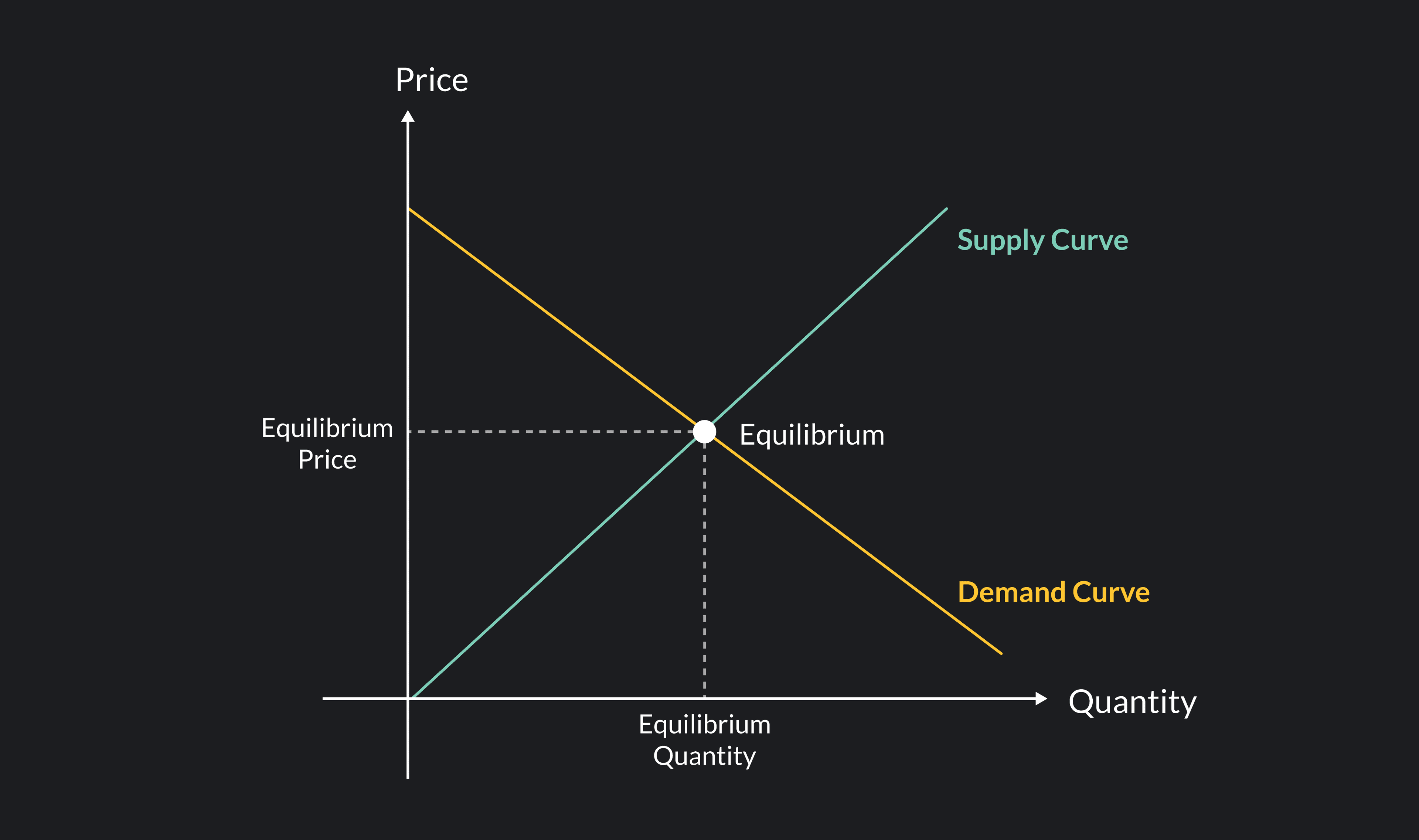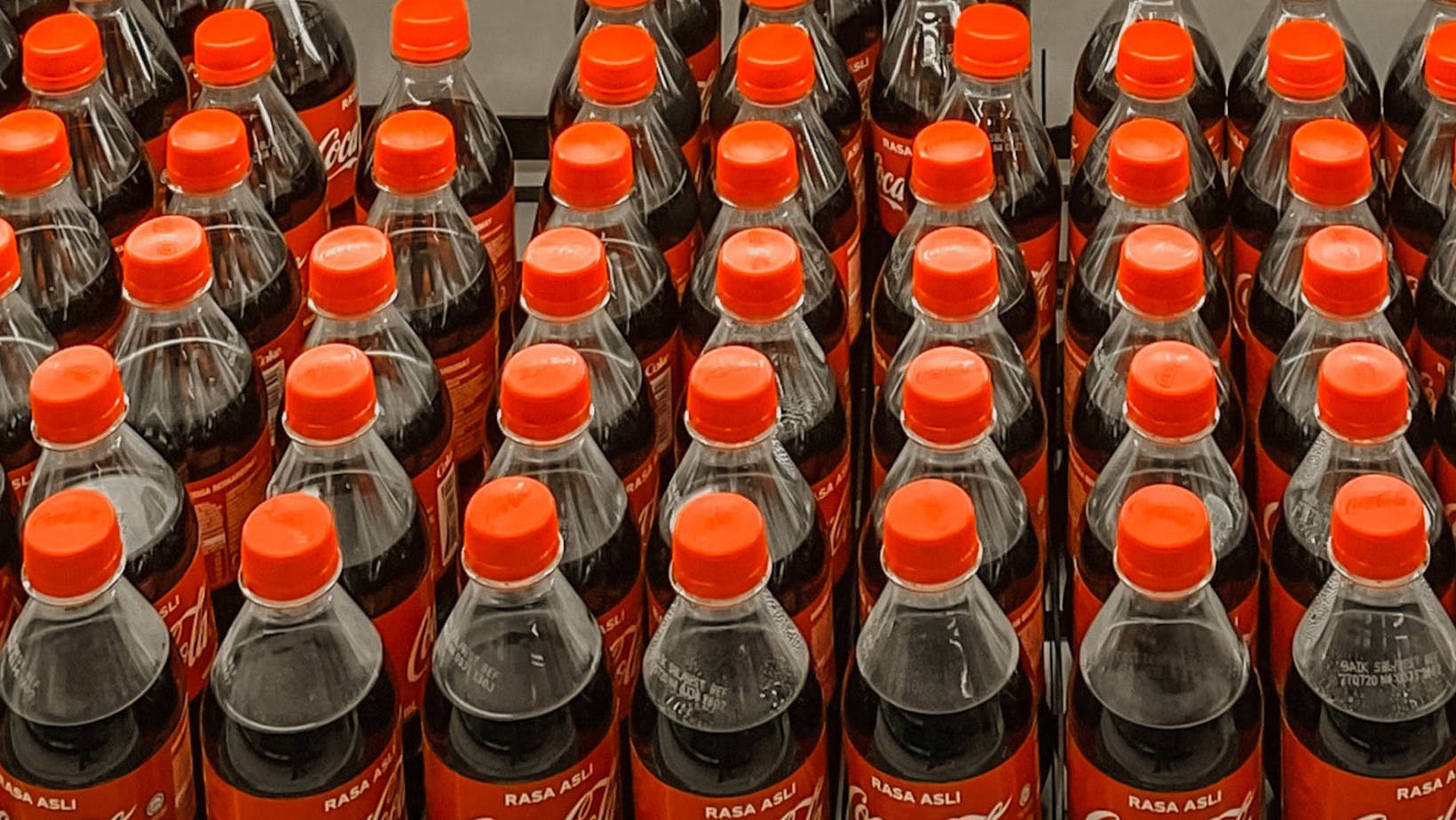
Economics
Budget Constraints in Economics
Learn what is a budget constraint, how to create one, and how to implement it in an economic situation, along with some examples.
Sarah Thomas
Subject Matter Expert

Economics
07.12.2022 • 10 min read
Subject Matter Expert
Learn about the market structure and the four types of market competitions. Read about their characteristics and go over an example for each.
In This Article
Every business manager needs to know what type of market they are operating and competing in to make optimal pricing and production decisions. This is foundational. When starting or exiting certain businesses, the first step often is to analyze the underlying market structure of that industry.
A market structure refers to the underlying characteristics of different types of markets.
A market is where buyers and sellers meet each other to exchange goods or services. The characteristics which define the type of market primarily depend on the number of sellers who will supply goods to that specific market. This means that the type of competition in that market will depend on the number of sellers who can freely join a market.
The more sellers, the more competitive the market. The harder it is to enter a market, the fewer sellers there will be. With fewer sellers, the price of goods will not be as competitive. This is why in an industry with a hard barrier to entry, there ends up being fewer suppliers. Then as a result of having few suppliers, the price of goods is not competitive.
In economic systems with free markets, any firm may supply the market with goods. However, different variables—such as the high cost of entry—often constrict many sellers from entering certain markets. Therefore, different industries make up different types of market structures.
Economists split the different types of market structures into four general markets:
Perfect competition
Pure monopoly
Monopolistic competition
Oligopoly
The main characteristics of a perfect competition market are:
Many small firms supply the market
Many buyers
All firms sell relatively similar products. Each firm’s product is identical to the products sold by competing firms. If a buyer does not like the price, they can find an identical product elsewhere for a lower price.
All buyers and sellers have perfect information. This means everyone has sufficient information about the general market price.
No barrier to entry. This means that it is easy and cheap to open a new business or close an existing one.

A perfectly competitive market is the most ideal type of market. It forces all parties to compete for the cheapest way to supply the market. This helps allocate economic resources in their most optimal sense.
In this market structure, suppliers have to sell their goods at prices beyond their control. Since all goods are similar products, if one seller raised their prices, they would lose customers. Buyers can go next door and buy the same thing at a lower price. This means that each individual firm has zero effect on the overall market price. Because of the numerous sellers, if one firm stops selling, it will not affect the overall quantity supplied. This is why economists refer to sellers in such a market as “price takers,” since every firm has to charge the prevailing market price. No one seller can influence a price change.
A good example of a perfectly competitive market is the market for basic produce like wheat, corn, sugar, eggs, and chicken. The products sold by different firms are essentially all the same. If a buyer does not like the price in one shop, they will go to another shop with cheaper prices.
In the real world, no industry will always have all the characteristics of a perfectly competitive market at all times. Nonetheless, we consider the financial markets—like the stock market or bond market—the closest thing to a perfectly competitive market structure.
On the other end of the spectrum—from a perfectly competitive market—is a pure monopoly. This is a market where a single firm accounts for all the sales of a particular good or service. The firm is the industry since there are no other suppliers.
The main reason why legal monopolies arise is because of the very costly and sometimes impossible barriers to entering that market. If no new firms can enter a market and compete, the existing firm will have a complete monopoly. This usually happens when a company owns a patent for manufacturing something. No other firms are allowed to produce that exact product in such a situation. So the company which owns the patent becomes a monopolistic owner.
A good example of this would be when Polaroid owned the patent for instant-photography technology. No other firm was allowed to produce cameras that had instant pictures printed from the camera for many years. So essentially, Polaroid owned a monopoly on instant photography.
Another reason a company can become a monopoly is when it controls all the natural resources of something. For example, DeBeers—a company that supplies most of the diamonds in the world—controls all the world’s supply of uncut diamonds, making them a monopolistic owner of diamonds.
Many public utilities are pure monopolies, such as eclectic and water companies. Since it is very expensive to build the infrastructure to supply water to an entire city, the firm is often the only seller. Sometimes government regulations create these monopolies that prohibit direct competition. The high cost of infrastructure would prevent any economic profit if there were multiple water or electric firms. With many public utility suppliers, the marginal cost of supply would lead to consumers paying higher prices. The government ensures that only one seller can sell certain goods.
Another example of a government-made monopoly is the U.S. Postal Service. By restricting the market to a single player, the price stays low.
Three main characteristics of a monopolistic competition market structure are:
Many firms supply the market.
Product differentiation. Although all firms may sell products that are close substitutes to one another, consumers see them as different.
Easy entry.
A monopolistic competition market accounts for most typical consumer goods. These include clothing, food, cosmetics, housing ware, and education. In such a market, firms must differentiate their brands and products from their competitors to win customers.
Under monopolistic competition, firms have more control over the price of goods they sell since consumers do not view other similar products as a perfect substitute. Therefore, to gain a competitive advantage in such a market, firms focus on demonstrating how their product is better than their competitors. This is why in a monopolistic competition market, companies spend a lot on product marketing and design since every company is trying to outshine each other.
In monopolistic competition, the prices are mostly determined by supply and demand. However, suppliers can have some pricing power since they get to create product differentiation.
Although there is a low barrier to entry, the high cost of differentiating your brand may make it hard for small businesses to enter the competitive environment.
A good example of a monopolistic competition market would be the market for sneakers or casual clothing. Although each company makes similar products, they use different tactics like advertisements and commercials to convince their customers that the version of sneakers they make is the best.
Another example of this would be fast-food companies. Fast food brands are constantly advertising their products. This is because the product they sell is not all that different from their competitors. To win customers, they try to appear unique and better than all other firms selling a similar product.
An oligopoly has two main characteristics:
A small number of firms produce most of the supply.
Large capital requirements limit other firms from entering the market.
In this type of market structure, since there are so few firms producing output, one firm's actions will greatly impact the entire industry.
Since there are so few suppliers, major shifts in the market can occur because of:
Technological advancement
A new product
A promotional campaign
Large price reductions
For this reason, firms keep a close eye on each other so that they can properly respond and continue competing for customers.
The price in an oligopoly is usually set by one of the more dominant players. In an oligopoly, a cartel of firms sometimes set prices—generally illegal in the United States—or by a dominant, leading firm.
Once the leading firm sets the price, everyone else has to compete at that price. This is why prices in oligopolies are much higher than in a competitive market, where the price of goods is more or less determined by the marginal cost of production. In a competitive market, marginal revenue is equal to the marginal cost. In oligopolies, prices are determined by the industry leaders. This is also why the margin profits are much greater in an oligopoly.
A great example of an oligopoly is the industry of building airplanes. Boeing and Airbus basically build and supply all large aircraft in the Western world. Another great example would be Apple and Google, which provide smartphone operating systems. These are great examples because we can get a sense that any change in one firm will have an immediate response from the other firms. For example, if Apple decreases the price it charges apps to operate on their phone, then Google will have to decrease prices as well, or it may risk losing its smartphone market share.
Another example of an oligopoly is commercial airlines. Most economists will characterize the airline industry as an oligopoly market structure. Because of the very high cost of entering the market, only a few airlines supply the market with air travel. In fact, we often see mergers between airlines since the high cost makes competing hard.
As you will notice in all the oligopoly examples, there is some sense of imperfect competition. This happens since only a few sellers are in the market, and they can have market power in setting prices.
Oligopolies can often lead to collusion. This means that firms agree with each other on the price of the goods. This is strictly illegal since it removes any sort of competition and causes the buyers to adhere strictly to the price the sellers set.
Imagine if all the airlines came together and decided they would not sell any tickets from New York to Los Angeles for less than $500 dollars. The airlines would benefit from it as they will not be afraid that their competitors will charge less. However, the consumer will suffer as there will be no way to fly across the coast for less than $500. That is why collusion is illegal. The government monitors oligopolistic markets strongly to ensure there is no collusion happening.
Another outcome of oligopolies is antitrust cases brought against companies to split them up. This usually happens when a company becomes so big that it prevents other competitive firms from operating in that market.
The specific market structures of any industry can change over time. But it is always important to know what type of market structure an industry operates in to understand its economic theory.
Outlier (from the co-founder of MasterClass) has brought together some of the world's best instructors, game designers, and filmmakers to create the future of online college.
Check out these related courses:

Economics
Learn what is a budget constraint, how to create one, and how to implement it in an economic situation, along with some examples.
Subject Matter Expert

Economics
Here’s an overview of cross price elasticity of demand, its definition, how it works, the difference with income elasticity of demand, and more.
Subject Matter Expert

Economics
Here’s an overview of the three economic questions, an explanation of each one of them, the circular flow diagram, and five types of economic systems.
Subject Matter Expert